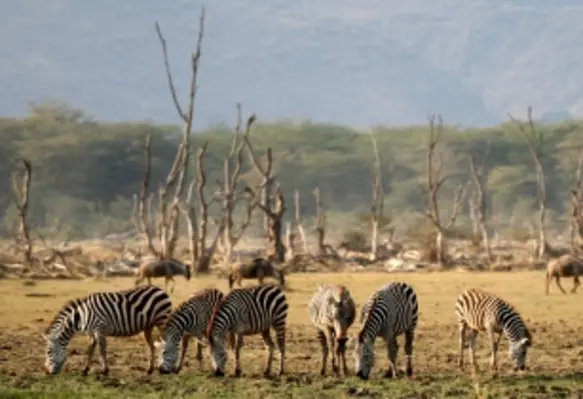Campaigns to track down poachers and protect endangered species in Africas wildlife reserves is tapping into the technology used in the world of computer games
The United States funded initiative is applying technology from artificial intelligence and game theory algorithms to predict the movement of poachers, helping rangers who are testing the new technology in Uganda to find illegal hunters and their traps that illegally take animals.
"We're trying to predict future poacher attacks or where poachers may strike next based on what we have observed in the past on our patrols," stated Professor Milind Tambe from the University of Southern California, who are leading the initiative.
"Each confiscated snare represents an animal's life saved," Tambe, whose team is developing technology called Protection Assistant for Wildlife Security (PAWS).
Across Africa, a battle against poaching is raging but rarely won. African elephant numbers fell by 20 per cent between 2006 and 2015 because of ivory poaching.
There have been some victories. Uganda has seen its elephant population recover from 700 in the 1980s to reach about 5,000 now. But officials say poaching is back on the rise.
"Elephant poaching has started to increase in the last five years, which is a major concern, and that’s linked to the global price of ivory," said Andy Plumptre, director of the Albertine Rift Program for the Wildlife Conservation Society in Uganda.
The issue here is the killing game which has a number of knock-on effects. It destroys the prey that is chased by carnivores such as lions and leopards, causing their numbers to drop too.
This is where PAWS aims to assist in the fight against poaching. This is currently being tested in Uganda's Queen Elizabeth National Park. The system helps rangers map routes in the same way mathematical computer models predict how a rational human reacts and create opponents for online poker and other games.
"We want to deliver the software so the local rangers can use it with minimum training,” Tambe said, adding that Queen Elizabeth National Park offered 18 years of ranger-collected data on illegal activities to help perfect the technology.
In the past month since the latest round of testing began, rangers have found 10 antelope traps and elephant snares waiting to be triggered with the help of PAWS, a far better score card than they could usually expect without technological assistance. Hopefully, these numbers will continue to grow.
























